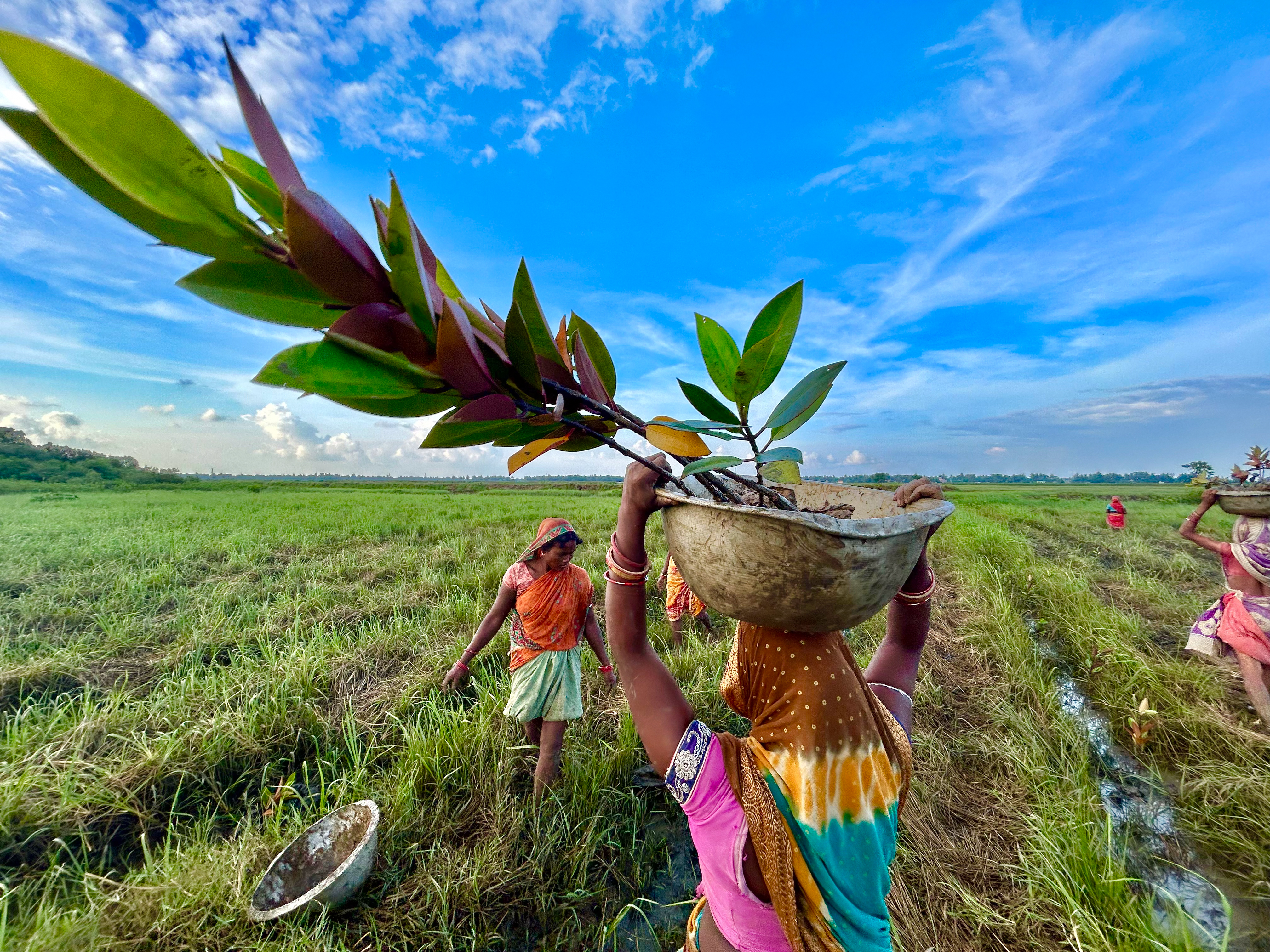From Fisherwoman to Climate Leader: How Nalini Kandi Sparked a Mangrove Movement
Address structural inequalities
Build understanding
Collaborative action and investment
Invest in local capabilities
Organization: The Odisha Paryavaran Sanrakshan Abhiyan Trust
2025 LOCAL ADAPTATION CHAMPIONS AWARD FINALIST
On India’s storm-prone eastern coast, where the Devi River meets the Bay of Bengal, entire communities live on the edge. Fishing families here have relied for generations on crabs, shrimp, and mangrove wood to survive. In recent decades, rising seas, intensifying storms, and shrinking mangrove forests have left them increasingly vulnerable.
Nalini Kandi, a fisherwoman from Jhadling village in Odisha, and her husband watched year after year as tides swallowed the mud walls of their house and eroded their livelihoods. “We were scared,” she said. “We knew the forest was shrinking, but we didn’t understand how that was connected to our suffering.”
Her perspective changed in 2014 during what seemed like an ordinary day of collecting firewood. Alongside four other women, Kandi encountered a group of young people building a mangrove nursery.
Refreshingly, these young people didn’t reprimand them for their part in deforestation. Instead, the group explained how mangroves could shield villages from cyclones, sustain fish stocks, and restore river health.
“That was the beginning of our journey,” Nalini exclaimed. “Now, we don’t just survive, we protect. My husband and I work in the mangrove nursery, and we’ve helped plant saplings on both sides of the river.”
What began with five women in one village has since grown into a community-led movement spanning 35 villages and five coastal Gram Panchayats (local governments), engaging over 1,000 households. Supported by the Odisha Paryavaran Sanrakshan Abhiyan Trust (OPSA Trust), Women for Mangroves has resulted in 28,000 saplings planted and another 45,000 nurtured in community-run nurseries.
The impact is visible. Human-driven mangrove destruction has dropped by 95%, crab and shrimp populations are recovering, and restored patches of forest are now protected by voluntary community patrols. Livelihoods have been reinvigorated and made more resilient, and most importantly, the villages are no longer unprotected from storms, tidal surges, coastal erosion, and saline intrusion.
“The storms still come, but the mangroves stand like a green wall between the sea and our homes,” Kandi said. “We feel safer. We see life returning.”
The initiative is not just about trees—it is about local leadership. Marginalized wetland communities, long excluded from environmental decision-making, are now driving the change. Villagers are trained in seed collection, nursery care, planting, and protection, while also spreading awareness through school programs, street theatre, and murals.
“This is not someone else’s program. This is ours,” Kandi said. “Today, I am not just a fisherwoman. I am a protector of mangroves. I am part of a movement led by my own people.”
Inspired by its success, OPSA Trust has launched a Million Mangroves by 2030 campaign, aiming to restore at least one million mangroves across India’s cyclone-prone coasts. The initiative combines ecosystem revival with green livelihoods and climate resilience.
For Kandi, the recognition is deeply symbolic. Standing among the mangroves she helped restore, she sees not just trees but dignity, protection, and food security. “We didn’t know the value of what we had. Now we do. And we will never let it go again.”
From a fisherwoman’s awakening to an international award stage, Women for Mangroves shows how grassroots action can transform vulnerability into resilience—protecting both people and the planet.
